Reaching for the moon
 The Nathan family. From left to right: Raymond, Reoven (the eldest brother), Hilda (sitting down), Mazal (standing up), Matilda and Abie. The photograph is taken from the family collection.
The Nathan family. From left to right: Raymond, Reoven (the eldest brother), Hilda (sitting down), Mazal (standing up), Matilda and Abie. The photograph is taken from the family collection.
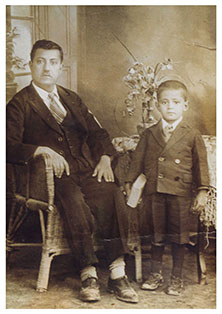 Abie with his father Yaacov (Jacob). The photograph is taken from the family collection.
Abie with his father Yaacov (Jacob). The photograph is taken from the family collection.
 This photograph, which appeared in the Jewish Advocate in November 1941, displays the winners of a writing competition. Abie (standing to the right) won first prize.
This photograph, which appeared in the Jewish Advocate in November 1941, displays the winners of a writing competition. Abie (standing to the right) won first prize.
Abie was born on the 29th of April 1927 in the Persian city of Abadan (today part of Iran), the third child in a traditional Jewish family. His father, Jacob, who was born in Sanaa (Yemen) worked for the Anglo-Iranian oil company and later opened a successful store for trading linen. His mother, Matilda, was a housewife. The family was wealthy. An additional brother and sister followed Abie.
Two bizarre stories are associated with his birth. These stories were told by a family member to “Maariv” daily newspaper shortly after Abie’s peace mission in February 1966. He was born with a birthmark and an expert (who was asked to explain this mark) said it was an omen that the child was destined to achieve great things. According to another story, Abie refused to be breast-fed and therefore his parents found a cow, which in turn refused to be milked. Abie himself recalls, both in his own autobiography and on different radio broadcasts on “The Voice of Peace”, that he had a happy childhood and a good relationship with the neighbours who were respectful towards his family. He often described the Sabbath meals with his father sitting at the head of the table and all the children paying him respect, the strolls on Saturday mornings to the synagogue, wrapped in prayer shawls while being greeted by their Muslim neighbours. He also mentioned the prayers from the Torah that were said in English. Abie remembers that as a child he used to lie on the roof of the house during the hot summer nights and observe the stars. One night his father came to the roof and said to him “Son, if you wish to reach the moon you should aim for the stars”.
Although Abie described his childhood as blissful, he had always felt that he was “the black sheep of the family” as he was always the only one to be blamed. In another interview Abie described how he had no toys as a child and that from a very small age he was left alone and had to learn to take care of himself.
When he was six Abie was sent, together with his younger brother Raymond, to be a border at Saint Mary’s - a prestigious Catholic Jesuit boarding school in Bombay. This school was for wealthy people and for children of British residents in India. Abie was a border at the school while his brother lived with his aunt. As the family’s financial position worsened, Abie returned to his aunt’s residence, a move which brought about feelings of deprivation. In an interview in the teenage magazine “Maariv Lanoar” in 1966, Abie talked about his school days: “My parents wanted to immigrate from Persia to Israel – but they also considered India and England . . . at [Saint Mary’s] I was aware of being a Jew and wasn’t forced to eat the sacramental bread”.
In another interview, Abie described how as a child he was fascinated by the Christian rituals and how he was deeply offended when he was not allowed to sing in the choir. He also described how he was once called “Jew-boy” by some children and then suffered a direct hit from a stone that scarred his face and bought about a severe hemorrhage. One of the teachers – Father Conti who witnessed this incident asked Abie what had happened to which the latter replied, “I stumbled over a rock”. The children appreciated Abie’s behaviour and he was never bothered again. Abie met Father Conti again at the end of 1966 when the latter was nearing eighty. Conti told him how he used this incident as an example of behaviour to his students.
As a result of the political crisis in Persia in 1939, the Nathan family left Abadan for India. Even though their financial situation had deteriorated, Abie’s parents continued to encourage him to study in order to succeed in life. However, when Matilda Nathan discovered that her son had a collection of Christian icons she decided he should go and study in the Jewish – Zionist school named after Sir Jacob Sassoon. In this school Abie and his fellow students received a Zionist education with an emphasis on right wing political orientation in the spirit of the Bei’tar Movement and they used to chant “the Jordan river has two banks/ this is not new/this one belongs to us [the Jewish people]/this one belongs to us too”. During summer vacations, Abie, like the rest of the students joined a summer camp where they would be taught Hebrew songs. Years later he revealed that his favourite Hebrew song is Rachel’s ‘Veoli” [``was it only a dream . . .”]
“Was it only a dream? Was it I?
Was it I who long ago
rose with the dawn to till the fields
by the sweat of my brow?
Was it I who on long, sultry days
of harvesting
on a high wagon loaded with sheaves
would sing?
Was it I who bathed in the innocent blue
- under a peaceful sky -
of my Galilee, my own Galilee?
Was it all a dream? Was it I? “
(trans. Robert Friend)
Abie recalls that as a teenager he already had clear ideals and a wish to be a leader. At the age of fourteen he won first prize in a political debate at the school of the Jewish community in Bombay. The topic was the establishment of a Jewish State, and this was probably the first time Abie’s name reached the press. Abie explained that even though he was mischievous he wanted to continue his education and become a lawyer or an engineer. His friends and relatives at the time claimed he was diligent and dedicated all his time to studying. Shortly before he graduated from school, Abie organised a student strike in protest at the behaviour of an English teacher who used to utter anti-Semitic remarks.
top The profession – aircraft pilot
In August 1943 the Second World War seemed very far from ending and the British armed forces in India searched for volunteers. 16-year old Abie saw a newspaper advertisement inviting 18-year olds to volunteer for an aircraft pilot training course in The Royal Air Force. Being adventurous, he went to the recruiting office but was refused because he was under age. Two weeks later he returned to the induction centre, lied about his age, and was drafted. Abie joined the 27th cycle of the course in the Royal Indo-British Air Force. Following five months of training at a base in Pona he was sent to Ambala-base in northern India. He performed his first solo flight in a Tiger Moth aircraft and in 1945 he received his Air Force pilot's wings and began training as a Hurricane and Howard bomber pilot.
In 1946 Abie was sent to Pashora to train in flying a Spitfire aircraft. There were a few Jewish pilots in this base, and Abie used to organize meetings in his tent and cook for everyone on Fridays. The Jewish pilots used to eat together and sing Shabbat songs. At the end of that year a decision was made to send Abie's squadron to Japan. Abie, who did not wish to be sent there, succeeded with the pressure of the leaders of the Jewish community to be released from the Armed Forces for "social reasons". Abie returned to Bombay and rented an apartment with a friend in Colabba – a prestigious part of town. After he received a permit for flying a civilian aircraft, he started flying Dakota and Beachcraft aircrafts in the private company Ambica Airlines.
On the 15th of August 1947 it was decided to divide India into two separate states: India and Pakistan. Following this decision, the Indian prime-minister Pandit Nehru, appealed to the Indian airline companies to take part in the transfer of the Hindu Pakistani residents to India. The airline company for which Abie worked contributed pilots and aircrafts to carry out the mission, and Abie participated actively in flying the refugees as a co-pilot. In his memoirs Abie recalls the congestion, crowding, and many manifestations of cruelty that he witnessed during this period. In order to stop refugees, who were fleeing for their lives, from entering the crowded plane, the pilots ran their engines at full speed. In one of the flights the pilots were almost killed, when a Pakistani policeman armed with a weapon threatened to shoot them if they did not follow his orders. The aircraft was loaded with refugees and could hardly lift off the airstrip. Abie was very shocked and had a nervous breakdown. According to him he sat crying during the whole flight. After the landing in India, Abie was hospitalized for three weeks. The violent events were publicized in the Indian press and Abie received a media-covered visit by the Indian Prime Minister. After he recovered, he left Ambica airlines and started flying with Air India.
top Volunteering for Israel
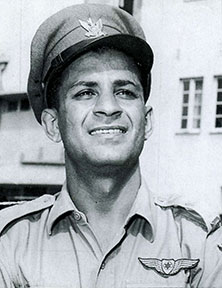 As a pilot in the 1948 War of Independence. The photograph is taken from Abie Nathan's autobiography.
As a pilot in the 1948 War of Independence. The photograph is taken from Abie Nathan's autobiography.
While working in Air India, Abie heard of the foundation of the State of Israel and of the upcoming invasion of the armies of the Arab countries. Abie turned to the Jewish Agency which was looking for volunteers and expressed his willingness to help in the defense of the young state. Several days later he received a response from the Jewish Agency accepting his request. Abie left Air India and flew with all of his savings – 250 pounds, to London.
Abie would later relate the circumstances of his departure to the Israeli media: "I thought that I would come to Israel to volunteer my assistance. I believed that the war would end in three months, and I would return to my job at Air India". However, it was not long before he changed his plans. Aharon Cohen, who knew Abie in India, explained in a press interview: "Abie is an impulsive man, but when he says something he cannot withdraw from it even if he regrets it … We once met someone on the street in India who said to us `You are Jewish – come to Israel’ and 3 days later Abie left India".
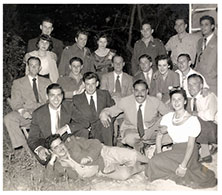 The Machal (Volunteers from abroad) members in group photograph. Abie can be seen on the right. Photograph courtesy of the Machal archives.
The Machal (Volunteers from abroad) members in group photograph. Abie can be seen on the right. Photograph courtesy of the Machal archives.
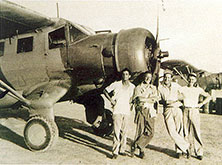 Machal volunteers standing in front of a Norsman aircraft. Abie is standing on the left. Photograph courtesy of the Machal archives.
Machal volunteers standing in front of a Norsman aircraft. Abie is standing on the left. Photograph courtesy of the Machal archives.
Abie's next bombing mission was on the village of Tarshiha. Many years later, in 1995, a CNN crew doing an investigative story brought together Abie and an old Arab lady that was crippled by those bombings. Abie, who felt a personal obligation towards the lady whose house he had bombed 47 years earlier, helped her to acquire a motorized wheelchair and some equipment for her home. From that time a connection was formed between them and after Abie became ill she visited him at his home in Tel Aviv. Several days after the bombing of Tarshiha Abie left on his last mission – bombing the Egyptian army concentrations that invaded Israel. But Abie did not succeed in locating the target and fearing that he might harm civilians he dropped the bombs at sea. That day the ceasefire was enacted and the war ended. Abie continued to serve in the air force. He flew paratroopers, trained in the pilots' training course, and was sent to England for a training program to fly modern combat aircrafts. Much later Abie related that at that point he wanted to become a squadron commander, but never made it, because being a "new immigrant" he was always outside the circle of those who were promoted, and also because he was not familiar with how things were done in Israel.
top From pilot to restaurateur
 Abie Nathan in the mid sixties. The photograph was taken by David Haris.
Abie Nathan in the mid sixties. The photograph was taken by David Haris.
In 1950 Abie met Rosie Schwartz and ten days later they married. The Nathans had a daughter they named Sharona, but a year later the marriage ended in an amicable divorce and they continued to have a good relationship afterwards. Abie left the air force with the rank of captain and joined EL Al airlines which was then in its beginning. He became a pilot on the Tel Aviv-London-New York route. He also participated in flying Jewish immigrants from Iran to Israel. This period marks Abie’s return to the good life of a civilian pilot. He rented a flat in London, was engaged in extensive traveling and partying, played golf, stayed in Paris and Rome and generally had a good time.
As a captain Abie was very strict when it came to security issues and more than once postponed flights for different reasons and made sure all the flight regulations were enforced to the letter. One time he flew an empty aircraft because the crew was tired. This behaviour forced him to quit his job at EL AL (with captain's rank) in December 1958.
 Abie Nathan and Rosy Schwartz on the day of the wedding. This photograph is taken from Abie Nathan's private collection.
Abie Nathan and Rosy Schwartz on the day of the wedding. This photograph is taken from Abie Nathan's private collection.
 Abie (standing to the right) with other EL-Al pilots in a photograph from 1954. The photograph is taken from Abie Nathan's autobiography.
Abie (standing to the right) with other EL-Al pilots in a photograph from 1954. The photograph is taken from Abie Nathan's autobiography.
 The front of the “California” restaurant in Tel Aviv. 1st March 1966. This photograph was taken by Abie Nathan (from his private collection).
The front of the “California” restaurant in Tel Aviv. 1st March 1966. This photograph was taken by Abie Nathan (from his private collection).
Abie became involved in Tel Aviv nightlife and became a household name in the gossip columns of the Israeli newspapers. He acquired an art gallery and other businesses in and around Tel Aviv and in a short while became a rich businessman. He started to host luxurious parties at his own expense for his many friends, and helped people in distress in a generous manner. He awarded student scholarships named after fellow pilots who were killed in the War of Independence, supported actors in need and helped needy families financially.
Abie related, on many occasions, that his social involvement started as a result of his friendship with one of the workers at "California", a relationship that soon turned romantic. In 1962 a dish washer of Spanish origin name Nabaz worked in "California". Abie fell in love with her and within a short while they became a couple. From her, as he said, he learned to be sensitive to people. Abie believed she was more intelligent than he was and she influenced him to paint and read belles-lettres such as Lorca. The relationship between them lasted two years after which she returned to Spain. Abie refused to be reconciled and tried to persuade her to return, but when he discovered that she was engaged to be married he felt that there was no longer a reason for him to stay in Madrid. In another instantaneous decision he decided to travel to the Scandinavian countries, which turned out to be a six month tour. When his business deteriorated he returned to the restaurant in Tel Aviv.
top The Peace Flight
 Abie Nathan inside his Steerman aircraft. The photograph was taken by Abie Nathan.
Abie Nathan inside his Steerman aircraft. The photograph was taken by Abie Nathan.
Abie returned to the "California" and to the vibrant life of Tel Aviv. The mid-sixties were a relatively quiet period in the young State of Israel. In Tel Aviv, people often went to the “Cameri” theatre and would end the evening in "California". The business flourished, and Abie would sit by the cashier to make sure that everybody remembered to pay.
One day a political debate broke out about future relations between Israel and the Arab countries. Abie, who sat aside most of the time, interrupted the conversation and expressed his opinion. The people around him responded with laughter and mockery "You should keep to selling hamburgers and guarding the till" he was told. Abie was a little offended but at the end of the evening a journalist who was present during the conversation approached him and said: "out of all the people here you were the only one who spoke both rationally and sensitively". Abie was touched by these words and he decided it was time to act.
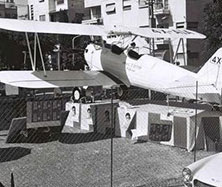 Abie's Steerman aircraft before the 1965 election. The photograph was taken by the Government Press Office.
Abie's Steerman aircraft before the 1965 election. The photograph was taken by the Government Press Office.
 The “Maariv” leader of the 28th February 1966.
The “Maariv” leader of the 28th February 1966.
 The “Yediot Achronot” leader of 28th February 1968.
The “Yediot Achronot” leader of 28th February 1968.
Abie’s flight was covered extensively by the Media. However, the report of a “forced landing” was mistakably reported as a “crash” and rumours were quick to spread that Abie had been killed. Shocked and in tears, people gathered around “California”. Many people blamed Abie’s friends including left wing journalist Eli Tavor and the broadcaster Amikam Gurevitz for encouraging Abie to this act of folly . . .
It was later reported that Abie has safely landed and the thousands of people who gathered in front of the "California" cheered at the news that Abie was alive. Abie returned to Israel the following day and was escorted by Israeli Air Force aircrafts. Thousands of people awaited him in the small airport of Hertzlia. Abie was interrogated by the police and was released on bail. Shortly afterwards he held a news conference in which he explained the purpose for his flight and his future plans.
Abie later recalled that when he arrived in Port Said, the Egyptians tried to persuade him to return to Israel. Abie explains he had no fuel and therefore had to stay the night. The Egyptians took him to a local shop which was opened up especially for him and bought him a pair of pyjamas.
Although Abie gained worldwide publicity the response to his flight was mixed: Some regarded him as a publicity chaser who would do anything to have his name in the newspapers, while others praised his action. David Ben-Gurion (Israel's first Prime Minister) referred to Abie’s flight to Egypt in the "Davar" daily newspaper: "It was an event of moral and political importance, arousing respect and not ridicule".
Abie decided to use the momentum to advance his ideas, and went on a tour of Europe and the USA to promote peace and dialogue between Jews and Arabs. He met with world leaders and men of letters including Pope Pius the sixth (14.3.1966) who gave him a peace medal, the philosopher Bertrand Russell, Senator Robert Kennedy, and other international public figures. The flight to Egypt changed the course of his life: from a restaurateur who sold hamburgers to the Tel Aviv bohemia, he became an idealist fighting to achieve his goals. From that time Abie dedicated all his wealth and strength to advancing the ideas that became the goal of his life: humanitarian help for ill-fated people in Israel and abroad, advancing the dialogue between Jews and Arabs and a non-violent struggle to promote peace and human rights.
top Advancing his ideas
 An invitation to take part in a peace march. The photograph was taken from a daily newspaper.
An invitation to take part in a peace march. The photograph was taken from a daily newspaper.
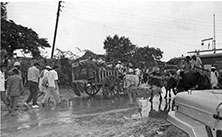 The drought in Bihar. The photograph was taken by Abie Nathan.
The drought in Bihar. The photograph was taken by Abie Nathan.
Upon his return from his voyage to Europe and the United-States in June 1966, Abie organised joint Jewish & Arabs marches from Tel-Aviv to Jerusalem in order to promote the peace concept. Among the people who took part in these marches was his daughter, Sharona. Abie met with public figures, such as Levy Eschkol (Israel's Prime Minister at the time) and David Ben-Gurion (a meeting which was held on the 26.6.1966), hoping they would use their influence to promote his ideas.
On the 28th of October 1966 he flew to India to assist the victims of the drought in Bihar. In the city of Patna he rented trucks, and for three days distributed 10 tons of corn to the inhabitants of 35 villages. Abie described the mission in a newspaper interview which took place on the 27.11.1966 he said: "Children and adults wallowed in the road's dust to collect a few grains of corn dropped from the trucks…The aim of the operation was to invoke the awareness of the richest people in India to the situation so that they would help their own people".
On the 22nd of December 1966 he met with India's prime-minister Indira Gandhi and asked for her support in promoting the relationship between Jews and Arabs, and for setting up diplomatic relations between India and Israel. Abie took this opportunity to visit the Christian school of his childhood and visit Father Conti who remembered Abie and was excited to see him.
When he returned to Israel, he established the "Peace Foundation". He then flew to London where he purchased a light-plane, which was previously owned by King Husain of Jordan, and flew it to Cyprus with the intention of bringing it to Israel. It was just before the Six-Day War began, and the Israeli authorities were afraid that Abie would fly again to an enemy country, so he was forbidden to bring the light-plane to Israel. His request to volunteer for reserve duty in the IDF was also denied.
top “The Voice of Peace”
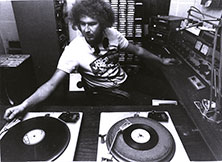 The Voice of Peace studio in the early days. Fron the Abie Nathan private collection.
The Voice of Peace studio in the early days. Fron the Abie Nathan private collection.
Abie has said many times that the idea of "The Voice of Peace” came to him when he sat at a hotel in Cyprus while gazing at the sea. It was 1967 and from a nearby radio he heard the sounds of the upcoming war. The Arabs bragged about destroying Israel, and the Israeli radio quoted them. "How can I reach out to the people and calm them down" – he thought. "If I had a radio station… I wouldn’t be able to broadcast from Israel and from Cyprus …. Maybe a vessel outside the territorial water of Israel would do it. We shall call it "The Voice of Peace” and talk to the people and reassure them".
However in the meantime the drums of war were approaching and nobody wanted to hear speeches about peace. In contradiction to what everybody had expected, Israel won the war, and conquered much territory including the Gaza strip. When the war was over, Abie hired an ice-cream vehicle and handed out ice-cream to children in the Gaza refugee camps. A few months later he flew to Egypt for the second time with a personal peace treaty, and was again arrested again and deported to Israel. In January 1968 he announced his intentions to establish a radio-station to promote peace, which would broadcast from a ship in the Mediterranean. Abie started by selling his personal property in that cause. In March he was fined 1400 Israeli lira (Israeli pounds) for entering Egypt, but out of principal, Abie decided to spent 40 days in jail rather than paying the fine which he contributed to a hospital in Israel.
 An article which appeared in the “Maariv” daily newspaper about Abie's work in Biafra (2nd August 1968).
An article which appeared in the “Maariv” daily newspaper about Abie's work in Biafra (2nd August 1968).
On the 22nd of December 1968 Abie flew to the Netherlands, hired a boat which he equipped with 550 tons of provisions, and sailed to the United-States. In New-York he purchased more provisions that were packed by volunteers and it was sent to Biafra. The Government of the Netherlands took part in this humanitarian venture and contributed part of the money. “The Inquirer” and the “Herald-Tribune” dedicated a special report on these activities which the media called “The Biafra Christmas ship”.
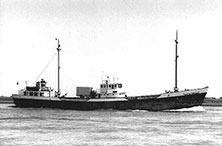 The Cito ship in Holland. The photograph is curtsey of was Hans Knot.
The Cito ship in Holland. The photograph is curtsey of was Hans Knot.
 Installing The transmitter on the ship. 23rd August 1970. The photograph is curtsey of the Abie Nathan private collection.
Installing The transmitter on the ship. 23rd August 1970. The photograph is curtsey of the Abie Nathan private collection.
Abie talked about the hard winters in New York. The ship had no heating facilities. The water froze causing the pipes to burst, which cost a fortune to repair. The New York Municipality, which only a few years before had honored him, was determined to make him leave and charged him high port taxes and forced him to move to a distant pier. Meanwhile, the Israeli media called Abie a madman and reported that “the man with the dreams is about to loose”. Abie, who was close to despair, finally decided to embark on a hunger strike in order to make people aware of his plans so that he would be able to collect the funds which were lacking. His efforts brought the money he needed but in December 1972 when the ship was about to sail to Israel, an earthquake hit Nicaragua and Abie went there instead to help build a refugee camp for the survivors.
In March 1973 the ship set sail for the Middle East. Many people didn’t believe that the small ship with the huge antenna, would manage to cross the Atlantic. Three days after its departure, water started seeping into the engine room. The ship had to sail to Bermuda for repairs, and from there, continued on to Marseille, France. There Abie was joined by Captain Francois Bonzon, Who organised a new crew of seamen, and together they headed for Israel.
 The Peaceship in the Mediterranean ocean in the early nineteen seventies. The photograph is curtsey of the Abie Nathan private collection.
The Peaceship in the Mediterranean ocean in the early nineteen seventies. The photograph is curtsey of the Abie Nathan private collection.
 Abie inside the boat with the flowers opposite the Egyptian coast.
curtsey of the Abie Nathan private collection.
Abie inside the boat with the flowers opposite the Egyptian coast.
curtsey of the Abie Nathan private collection.
During the Yom Kippur War (the October War) which took place between the 6th of October and the 23rd of October 1973. Abie sailed to Egypt and anchored opposite Port-Said where he called for a cease fire and a dialogue.
After the war ended Abie returned to Marseille to raise money for the ship which required maintenance following the damage brought about by the tough winter. He resided in Europe for a year and a half. During this period he tried to start a dialogue with various Arab parties and even visited Beirut. Abie tried to raise money which would enable him to resume his broadcasts but his endeavourers were not very successful.
Abie’s name returned to the headlines when, sitting in Marseille, he decided to start a hunger strike against the wave of violence in the Middle East which climaxed in the massacre of 21 Israeli children and three adults, together with three local people, in the Israeli village of Ma’alot, the IDF’s bombing in Lebanon and arms shipments to the Middle East. However, the French media ignored him and Abie decided to continue the hunger strike in a New York hotel. This two didn’t achieve the desired effect and Abie returned to France, defeated. Overall, Abie’s hunger strike which commenced on the 20th of January 1975 lasted for forty days.
The second half of 1975 was more successful for Abie. On the 20th of April hundreds of youngsters demonstrated in Marseille in support of Abie and his peace ship project. In another reversal of fortune, Abie received a large financial contribution. The contribution was the result of Abie’s acquaintance with a French teacher and his wife who had adopted five children, each child, a refugee from a different country. The family received a substantial inheritance which they decided to give up and hand on to Abie. Abie agreed to take the inheritance but only as a loan. The money enabled Abie to perform the required maintenance on the ship and the ship was ready to return to the Middle East.
When the Suez Canal was reopened (on the 5th of June 1975), Abie requested permission from the Egyptian authorities to sail through it to promote peace in the region. However, his request was refused. The ship returned to her position opposite the Tel-Aviv coast and continued broadcasting. Abie made another attempt and in September of that year sailed in a small boat to Port-Said with thousands of flowers which had been collected by Israeli citizens. Once again he was detained and expelled. In January 1976 Abie donated 200,000 Israeli lirot out of the proceeds made from “The Voice of Peace” to children’s hospitals in Israel and Gaza.
 Abie distributing food for the children of Sanarate in Guatemala. The photograph is curtsey of the Abie Nathan private collection.
Abie distributing food for the children of Sanarate in Guatemala. The photograph is curtsey of the Abie Nathan private collection.
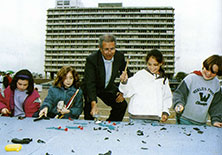 The clearing out of the war toys in front of the Tel Aviv municipality (1986). The photograph is curtsey of the Abie Nathan private collection.
The clearing out of the war toys in front of the Tel Aviv municipality (1986). The photograph is curtsey of the Abie Nathan private collection.
“The Voice of Peace” continued to flourish and all the proceeds from advertisements were used for charity. According to a British broadcasting magazine the “The Voice of Peace” had 23 million listeners around the Middle East. During that year Abie purchased many toys and distributed them among Israeli kids in northern Israel who were forced to live in shelters because of attacks from Lebanon. He also donated sporting equipment to prison facilities and sponsored cultural events.
On the 27th of July 1976 an Airbus A300 originating from Tel Aviv, carrying 248 passengers and a crew of twelve was hijacked in Athens by Arab terrorists. The plane was eventually taken to Entebbe airport in Uganda. Three days later Abie flew to Entebbe in an attempt to release the hostages and even met with the secretary of president of Uganda Idi Ami. However, he returned to Israel under government orders. At the end of that year he applied to Egypt’s president, Anuar Sadat, for permission to enter the Suez Canal and this time he obtained it. In January 1977 Abie sailed to Eilat (Israel’s southernmost city) carrying on board toys and gifts for children. During that year he organised a ceremony in which he buried war toys given to him by the public and these were later replaced by educational ones. He repeated this ceremony for several more years on his birthday.
top Humanitarian Efforts
 Abie with food supplies in Cambodia. The photograph is from “Maariv” daily supplement 9th November 1979.
Abie with food supplies in Cambodia. The photograph is from “Maariv” daily supplement 9th November 1979.
In January 1979 Abie appealed to the new Prime Minister of Israel, Menachem Begin to absorb as a gesture of good will four hundred child refuges from the Vietnamese war. Abie believed this through this symbolic and moral act the world would see that the Jewish attitude towards refuges differed from the way the nations of the world treated the Jewish refuges during the Second World War. The government authorised the arrival of one hundred refugees and Abie helped in their absorption. On the 26th of March 1979, Israel and Egypt signed a peace treaty. When the peace agreement was signed, Abie organised a mass rally in Tel-Aviv municipal square and donated 250,000 Israeli lira to Ilan (Israel's Foundation for the Handicapped) and to a hospital in Cairo.
Abie didn’t spend too much time on celebrations. By October 1979 the world had become aware of the scale of the genocide in Cambodia caused by the Kampuchean Communist Party. Abie purchased food in Bangkok which he distributed in villages around the Cambodia/Thailand border. He then flew to the United States and collected donations. He even received assistance from the United States government. The Israeli Prime Minister, Menachem Begin instructed all the Israel representatives in Thailand to assist Abie and the Israeli ambassador to Thailand, Mordechai Lador together with a group of doctors headed by Dr Yaacov Adler set up the first refugee camp in Thailand. The Israeli aid came in thirty trucks which had the title “Food from Israel” marked on them. The compound included a hospital which was encircled by Israeli flags. The hospital treated tens of thousands of refugees. When interviewed in the media, Abie reiterated Israel’s moral obligation to assist refuges.
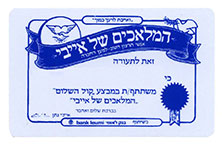 A membership card for “Abie's Angels”.
A membership card for “Abie's Angels”.
The summer of nineteen eighty one saw northern Israel under attack from Katyusha rockets launched by Palestnian guerrillas in southern Lebanon. On the 27th of May, Abie organised a support rally for the residents who were living in shelters. The nineteen eighty two Lebanon War which followed didn’t stop Abie’s humanitarian activites. He organised aid for the refugees in Lebanon. He also arrived in Beirut together with a group of French journalists, and met with the PLO (Palestinian Liberation Organisation) leader, Yasser Arafat. The purpose of this meeting, which was authorized by the Israel government, was to secure the release of Israeli pilot Aharon Achiaz whose Skyhawk fighter had been shot down by the PLO. However, Arafat turned down Abie’s request saying that “You expect me to release our only Israeli prisoner with no preconditions while your country holds six thousand of our people?” The pilot was later released in a prisoner exchange.
In 1983, Abie ran for election to the Tel Aviv Municipality and was elected as a member of Tel Aviv Municipal Council. He started a project called “A warm winter for the elderly” which involved supplying stoves and oil to the elderly citizens of Jerusalem.
In May 1984, in an attempt to release Ida Nodel, Natan Sharansky and other Jewish prisoners of conscious who were detained in Soviet prisons, Abie flew to Moscow and met with the journalist Victor Lewis who held good connections with the Soviet authorities and with the Soviet Peace Committee. However his mission was unsuccessful. Not only was his request to meet Nodel turned down but the Soviet authorites refused to let him extend his visit.
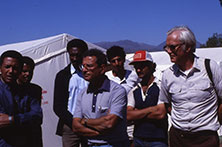 Abie (centre) in front of tents in an Ethiopian refugee camp in the beginning of 1985. The photograph is taken from Abie Nathan's private collection.
Abie (centre) in front of tents in an Ethiopian refugee camp in the beginning of 1985. The photograph is taken from Abie Nathan's private collection.
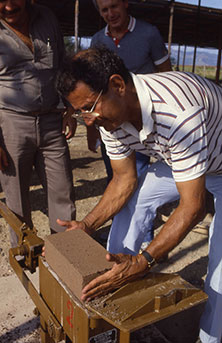 Abie in a brick factory in Armero, Columbia. The photograph is taken from Abie Nathan's private collection.
Abie in a brick factory in Armero, Columbia. The photograph is taken from Abie Nathan's private collection.
The Ethiopian campaign was immensely successful. Abie met with the president of Ethiopia and raised the question of establishing diplomatic relations with Israel and granting permission for Ethiopian Jews to immigrate to Israel. He even passed on messages between the Israeli and the Ethiopian governments. When he returned to Israel he started a phone-in programme on the “The Voice of Peace” in which he tried to solve everyday problems of the listeners. In addition, he began a campaign to install security doors for elderly citizens living in the poorer areas of Tel Aviv.
In November 1985 a volcano erupted in Armero, which was the second biggest city in Tolima Department in Columbia, killing about 23,000 people. Once again Abie recruited money from various Jewish Organisation s which he used to set up a factory which produced bricks at the rate of one million bricks per month. In 1987 plans were made for the foundation of a village for drug rehabilitation in southern Israel called “The Village of Good Hope” and he joined an international campaign against drugs. In August 1987 Abie jointed a delegation of Israeli teenagers on a trip to Poland where they visited concentration camps. Following this visit he initiated, together with “Yad Vashem” (An Israeli Organisation entrusted with documenting the history of the Jewish people during the period of the Holocaust) a personal commemoration campaign for the victims of the Holocaust. As part of this campaign, he had the number of one of the Holocaust victims who was murdered in Auschwitz - B14887 tattooed on his arm.
top Sentenced to Prison
 Abie behind bars. The photograph is taken from Abie Nathan's private collection.
Abie behind bars. The photograph is taken from Abie Nathan's private collection.
In September 1989, Abie flew to Tunis and met Yasser Arafat the chairman of the PLO (Palestinian Liberation Organisation) in an attempt to persuade him to cease terrorism and start negotiations with Israel. This meeting caused a huge uproar in Israel which up till then viewed the PLO as a terrorist organisation and meeting members of the PLO was illegal under Israeli law. In February 1989, following the Leninakan earthquake in Armenia, he began collecting food and clothes for the survivors. The aid was conveyed through the first Russian ship to have docked in Israel since the ties between Israel and the Soviet Union had been severed following the Six Day War in 1967.
In October Abie was sentenced to six months imprisonment following his meetings with the P.L.O. However, he resumed his meetings once he was released. Throughout 1990 he also met with public figures throughout the world and called on the Palestinians to renounce terrorism and Israel to recognise the Palestinian representatives and start negotiations for peace.
During the First Gulf War in 1991 he purchased food and fifty thousand bottles of mineral water to be distributed to the Kurds of northern Iraq who, out of fear of Saddam Hussein, had fled for the mountains. This operation was conducted with the help of the United States Air force.
 Israeli youth demonstrating for Abie's release from prison. The photograph is taken from Abie Nathan's private collection.
Israeli youth demonstrating for Abie's release from prison. The photograph is taken from Abie Nathan's private collection.
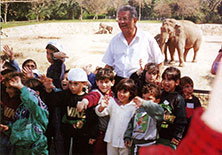 Abie organizing a “fun day” in the Ramat Gan Safari. The photograph is taken from Abie Nathan's private collection.
Abie organizing a “fun day” in the Ramat Gan Safari. The photograph is taken from Abie Nathan's private collection.
Following his release, Abie continued with his humanitarian activities both in Israel and abroad. He organised a “fun day” in the Ramat Gan Safari for grandparents, parents and kids from underprivileged areas. On the 25th of August 1992 he flew to help refuges in Somalia. Abie raised over one million dollars, which was used to set up a camp for thirty five thousand Somalia refuges in the city of Ruiru (Kenya).
On the 13th of September 1993 Israel and the PLO signed a peace agreement known as the Oslo Peace Accords. Although Abie was not invited by the Israeli government to attend the ceremony which took place in Washington, he attended as an Israeli journalist.
 Abie watches the sinking of his ship on the 28th November 1993. The photograph is curtsey of Hans Knot.
Abie watches the sinking of his ship on the 28th November 1993. The photograph is curtsey of Hans Knot.
Later in the year he decided to stop the broadcast of “The Voice of Peace” due to his growing financial difficulties. The idea, patronised by the Mayor of Tel Aviv and others, to turn the ship into a museum, did not seem to bare fruit. The disgruntled Abie decided that he couldn’t wait any longer for the possibility of the ship turning into a museum while he has to sell all his property to maintain it. He therefore decided to sink the ship.
The last music to be sung on the ship was Pete Seeger’s “We Shall Overcome” which Abie regarded and still regards as a kind of personal anthem:
“We shall overcome,
We shall overcome,
We shall overcome, some day
Oh deep in my heart
I do believe
We shall overcome some day
We’ll walk hand in hand
We’ll walk hand in hand
We’ll walk hand in hand some day
We shall all be free
We shall all be free
We shall all be free some day
We are not afraid
We are not afraid
We are not afraid today
We are not alone
We are not alone
We are not alone today
The whole wide world around
The whole wide world around
The whole wide world around some day
We shall overcome,
We shall overcome,
We shall overcome, some day”
Two months later the ship was scuttled opposite the shores of Israel and Abie, who for years had dressed in black garments as part of his protest against the evils of violence and occupation, started wearing everyday clothes.
Even without a ship, Abie continued in his personal and humanitarian activities. In the years 1994-1996 he was engaged in setting up refuge camps in Zaire and Rwanda and was also engaged in welfare activities both in Israel and abroad. Abie participated in peace forums and gave advice to international organiations about how to deal with refugees.
top The years following his stroke
 Abie receives the Nuremberg prize in Germany.
Abie receives the Nuremberg prize in Germany.
On the sixth of August, 1996 Abie decided to take time out from his social engagements. He flew to Washington for a year intending to write his memoirs. However, a month after his arrival in the US capital, Abie suffered a stroke and was rushed to Israel for treatment. After an extended period of recuperation, Abie moved to a rented flat in Tel Aviv where he was confined to a wheelchair and supported by Rada – his loyal assistant from the Peace ship. Abie continued writing his memoirs – with the help of Israeli author Yoram Rosler – and they were published in Hebrew in 1997. Despite his physical condition he continued to attend public events and with the remainder of his money initiated the distribution of food to the hungry people of Bulgaria which suffered a financial crisis in the late nineteen nineties. Abie, at the time confined to a wheelchair participated in the distribution.
On September 26th 1997, Abie received the Nuremberg International Human Rights Awards which he donated to Israeli disabled Organisations. Not long afterwards he suffered another stroke and his physical condition and verbal ability deteriorated. Abie continued living in Tel Aviv, aided by his close friends. In February 2000 he decided to fly to Bangalore in India for further treatment. In India he revisited Saint Mary’s school and met with children to whom he told his life story.
A short time after returning from India, Abie moved to a Tel Aviv retirement home. Despite his illness, Abie continued participating in social events and marked the anniversary of his fight to Egypt in a party with friends in the Tel Aviv “Tzavta” nightclub which took place usually around late April or early May. On the 24th of March 2005, as a mark of gratitude for his contribution to Israel, Abie received golden pilot's wings from the commander of the Israeli Air Force. The ninth of July 2005 witnessed the premiere of Eytan Harris’ film “Abe Nathan As The Sun Sets” as part of the Jerusalem film festival. The film is a documentary about Abie’s life. Further screenings were made in Tel Aviv and the film was broadcast on Israeli television. On the 4th of November 2006 the city of Amsterdam played host for a nostalgic reunion of veterans to “The Voice of Peace”. Dozens of veterans and over two hundred guests from Europe, Israel and the United States took part in the event. Around the same time “Radios” a local radio station in Israel began broadcasting a weekly show called “traveling through the ages” which played homage to Abie Nathan and “The Voice of Peace”. Abie has also been “adopted” by the young students of the Mevoot Yam youth village in Michmorret which held a special naval review in his honour.
On the 29th of April 2007 Abie celebrated his eightieth birthday alongside his family and friends. “Radios” held a special day of broadcasting and Phonokol Records LMD in association with “Radios” and “Friends of Abie” issued a double C.D with original broadcasts by Abie and music from “The Voice of Peace”. In celebration of Abie’s birthday and on the 34th anniversary of “The Voice of Peace” a commemoration plaque was unveiled for Abie Nathan’s peace ship on Gordon Beach in Tel Aviv. In July 2007 it was announced that starting in October 2007 every day around sunset Abie’s famous call from the “Voice of Peace” would be played:
“You are listening to the “Voice of Peace” broadcasting from somewhere in the Mediterranean and right now as the sun sets the “Voice of Peace” will shut down its transmissions for a period of thirty seconds in memory of all the victims of violence in this region and all over our planet. We hope that you will all join us in a moment of prayer”.
This would be followed by other radio recordings from “The Voice of Peace”. Nowadays a group of friends is engaged in a project of building a museum and a centre for volunteers, which will be named after Abie Nathan.
Noam Tal, October 2007
top
